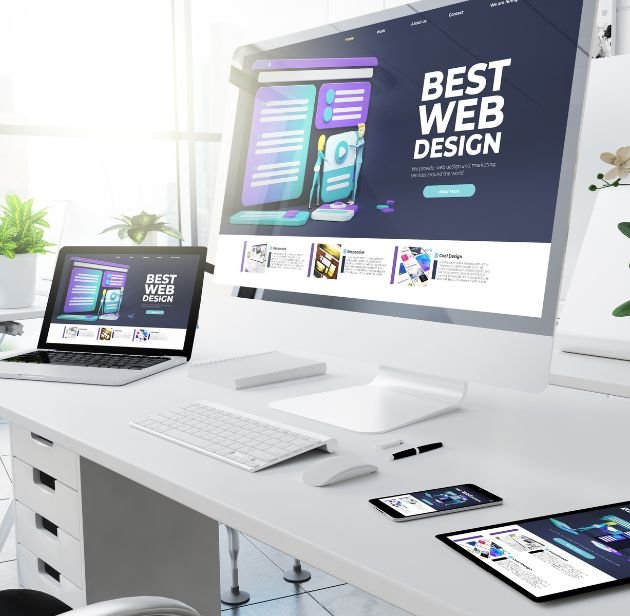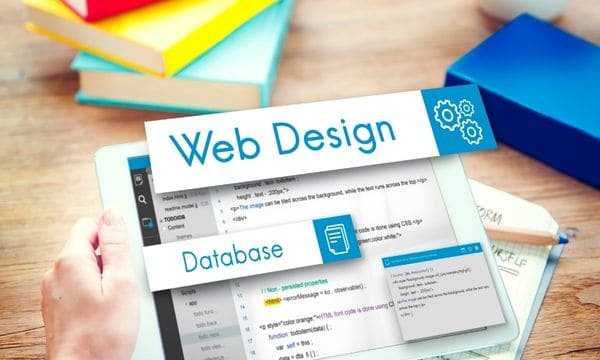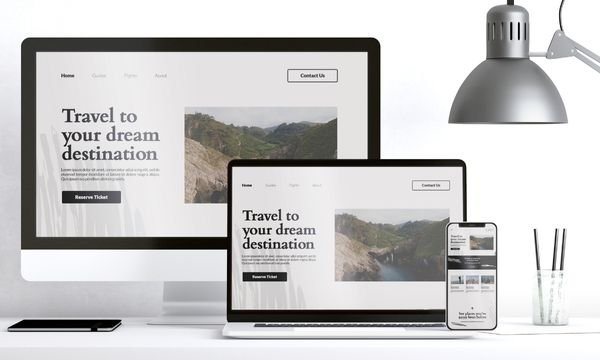Website Design & Development
A website is a collection of web pages that are designed to provide information about a particular topic or business on the internet. It is a virtual space that can be accessed from any location in the world with an internet connection. Websites are built using programming languages such as HTML, CSS, and JavaScript, and they can contain a wide range of multimedia content such as text, images, videos, and audio. Websites can be used for a variety of purposes, such as e-commerce, social networking, education, entertainment, and more. They are typically accessed through a web browser such as Google Chrome, Mozilla Firefox, or Safari, and they can be viewed on various devices such as desktops, laptops, tablets, and smartphones.
Website Designing
Website designing refers to the process of creating visually appealing and user-friendly websites that cater to the needs of businesses and their target audience. A website is a virtual representation of a business, and it is crucial to have an efficient and effective website that engages users and delivers the desired results. In this article, we will discuss the different types of website designing and the benefits they offer.
Types of Website:
- Static Website Designing: A static website is a basic website that is designed using HTML and CSS. Static websites are easy to create and maintain, and they are suitable for small businesses or startups that do not require frequent updates. Static websites have limited functionality, and they are not interactive.
- Dynamic Website Designing: A dynamic website is a more complex website that is designed using advanced programming languages such as PHP, ASP, or JSP. Dynamic websites are suitable for businesses that require frequent updates and advanced functionality. Dynamic websites are interactive, and they allow users to interact with the website and its content.
- E-commerce Website Designing: An e-commerce website is a website that is designed for businesses that sell products or services online. E-commerce websites are designed using advanced programming languages such as PHP, ASP, or JSP, and they have advanced functionality such as online payment systems, shopping carts, and product catalogs.
- Responsive Website Designing: A responsive website is a website that is designed to be accessible on different devices such as desktops, laptops, tablets, and mobile phones. Responsive websites adjust their layout and content based on the device that is being used to access the website.

Benefits of Having a Website
- Branding: A well-designed website can help businesses establish a strong brand identity and improve their online presence. A website can showcase the products or services offered by the business and provide customers with a clear understanding of what the business stands for.
- Increased Traffic: An efficient and user-friendly website can help businesses attract more traffic and improve their search engine rankings. A website that is easy to navigate and has relevant content can help businesses attract more visitors and increase their chances of converting them into customers.
- Better User Experience: A website that is designed with the user in mind can help businesses provide a better user experience. A website that is easy to navigate, has a clear layout, and provides relevant information can help businesses engage users and encourage them to stay on the website for longer periods.
- Increased Sales: A well-designed website can help businesses increase their sales by providing users with an easy and convenient way to purchase products or services online. An e-commerce website can help businesses reach a wider audience and expand their customer base.
Types of Website

Static Website

Dynamic Website

E-commerce Website

Responsive Website
Request A Quote

